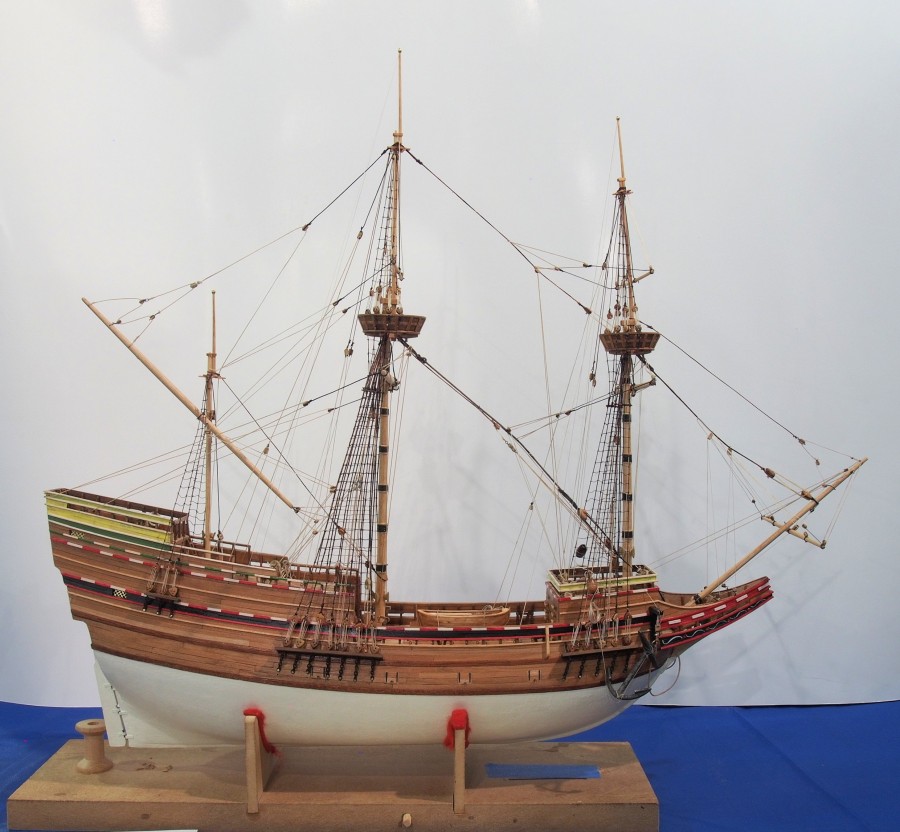Some of the displays that were on hand in 2012.
Spanish Carrack
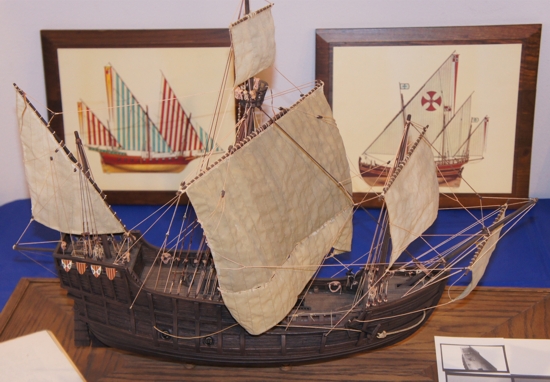
Mark Persichetti built this 40-year-old plastic, injection-moulded kit.
This carrack, is very similar to Columbus’s Nina, Pint and Santa Maria. In fact, this model is based upon the plans for a reconstruction of the Santa Maria replica now in Barcelona, Spain.
Period: 1470
Model length: 24”, height: 18”
Scale: not provided
Whaling Launch
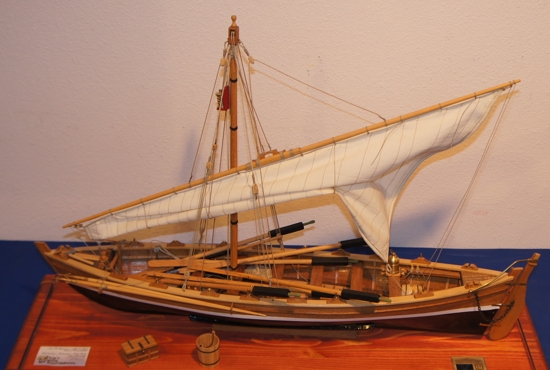
Jon Sorensen built this generic whaling launch from a kit he then modified. It is hardwood.
A whaling ship would normally carry six or more launches in which the crew would advance upon a whale intending to harpoon the beast. Many launches might be lost over the course of a four-year whaling expedition, so a boatwright might be part of the crew in order to repair or even construct new boats.
Period: 19th Century
Model length: 24”, height: 18”
Scale: 1”=1ft.
SS Portland
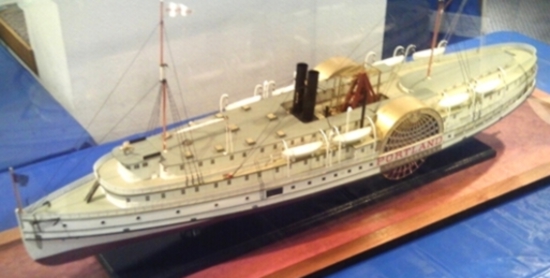
Ed Quam constructed this model from a kit but modified it considerably. Materials include basswood, styrene, metal and fiber.
The Portland was an intercoastal side wheel steam boat designed to carry passengers and cargo between Boston and Portland, Maine. She was caught in a “nor’easter” and sunk with all hands on board. The wreckage was founded in 1988 by the Historical Maritime Group of New England off the coast of Cape Ann..
Period: 1890’s
Model length: 42”, height: 14”
Scale: 1/8” – 1 ft.
Cutty Sark

Mark Persichetti is building this plank-on-bulkhead kit model of this famous British clipper ship. Planking is mahogany. He cut the frames from printed plywood supplied in the kit and assembled them into this skeletal framework.
February16th,1870, Cutty Sark left London bound for Shanghai, via the Cape of Good Hope, on her first voyage. She is a fabled clipper in service of the tea trade. She is the only tea clipper still in existence. At present, she is being restored and will then be at dockside in Greenwich, England for any and all to visit.
Period: 1870-1922 Model length: 38” Scale: 1:75
HMS Bounty
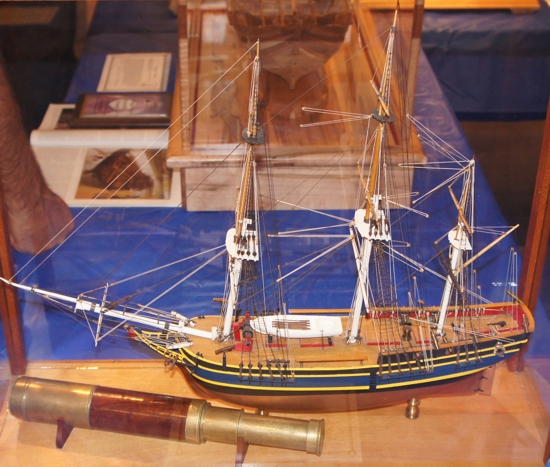
John McGann built this model from a kit in 1944 when he was 16.
It was his first. Since then, John has lost count of the number of
models he has built, but it has been a continuous avocation for 67 years.
The Bounty was a collier purchased by the British Royal Navy and converted to an armed transport. It’s mission was to collect bread fruit seedlings in Tahiti and transport them to Jamaica to feed the slaves on the sugar plantations there. The crew mutinied and cast Captain Bligh and 18 loyal crew members adrift in a small launch. After an epic voyage of 3,618 miles, Bligh landed at Timor, while the Bounty sailed to Pitcairn Island with a partially native crew where their descendents live to this day.
Period: 1789
Model length: 24”, height: 22”
Scale: 1=48
Fair American

Bill Matzinger modified an “Admiralty” kit (meaning no rigging, ie, the way ship models were presented to the Admiralty for approval for construction) by adding masts, spars and rigging. Bill spent two years constructing this American privateer.
Fair American was a privateer during the Revolutionary War. It was responsible for capturing many British merchant vessels.
Period: Revolutionary War
Size: 27” long, 23” tall
Scale: 1/4”=1 ft.
Charles W. Morgan
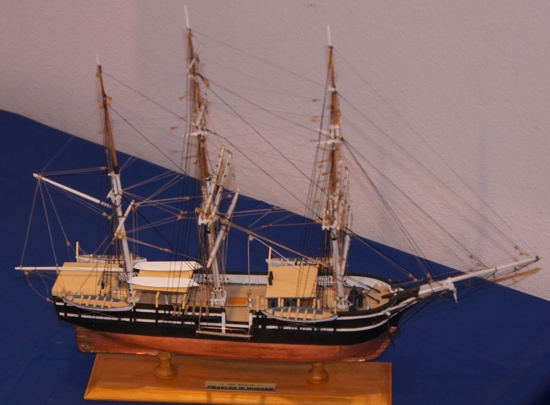
Martin Jelsema took a vintage kit and modified it to better represent the real ship which resides at Mystic Seaport, CN. It’s a solid hull model from the early 1970’s. Other materials include balsa and basswood, fine wire, thread and metal fittings. Rigging was derived from photos and published materials about whaling ship construction, rigging and operation. Martin spent 9-months on this project of which 2-months involved research and drawing plans for the rigging.
The Charles W. Morgan still exists. It is a major fixture at the Mystic Seaport Museum in Connecticut. It is the only surviving American wooden whaling ship. The Morgan was launched in 1841, and during her 80-year career at sea she made 37 voyages, several lasting four or more years while hunting whales from the arctic circle to the south seas.
Period: last half of the 19th-Century
Model length: 16” Height: 13”
Scale: 1:128
Oseberg Viking Ship

Bob Conover built this modified kit. He exposed the section between frames just forward of the mast to show the construction details used by 9th-century Vikings. Note the way planks were secured to the ribs by means of lashings through holes in the undersides of the ribs, and corresponding holes in cleats cut in the strakes located next to the ribs.
The original Oseberg was excavated from a grave in 1904 and is on display in the Nautical Museum of Oslo, Norway. This ship had 12 strakes secured with rivets in lapstrake hull construction. In later Viking ships the lashing method was replaced with wood dowels.
Period: Around 800ad
Model is 23” long, 16”tall
Scale: 1:50
Christopher Columbus
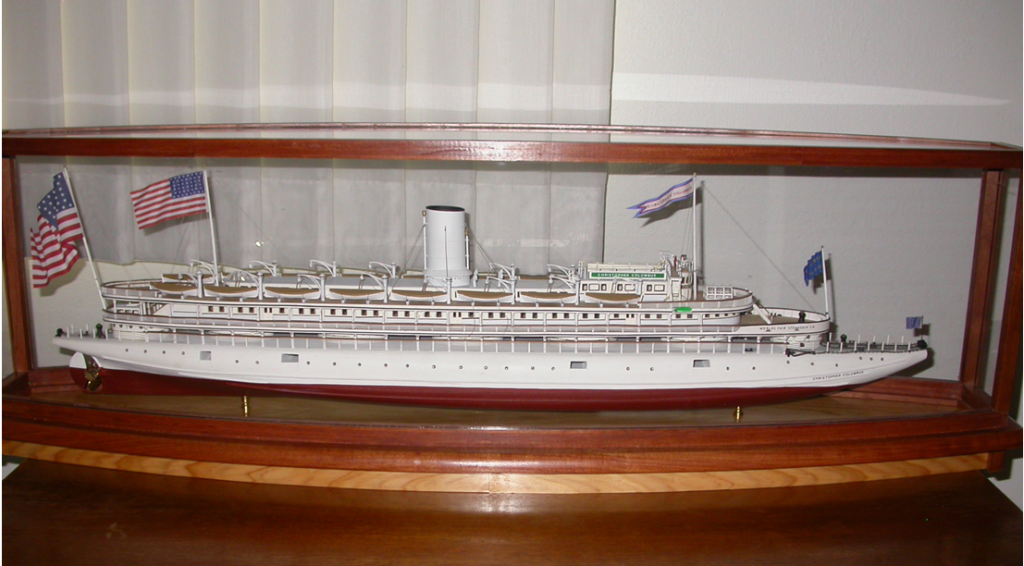
Mayflower
